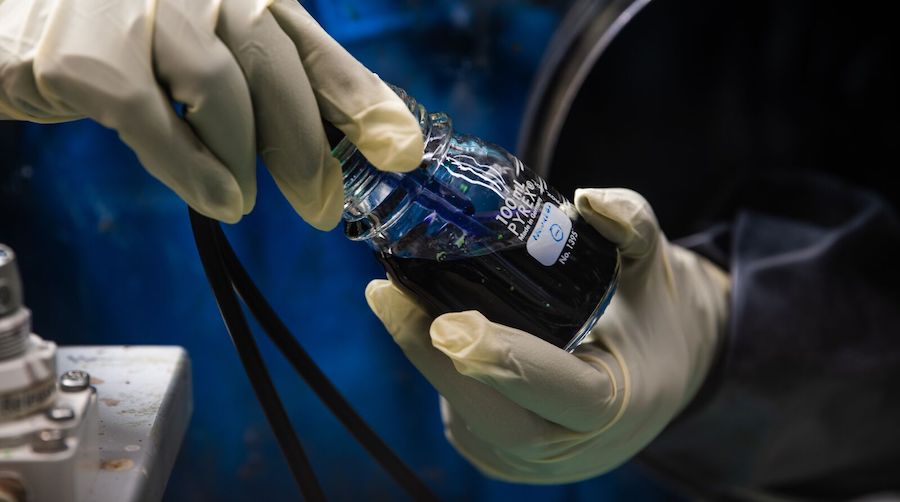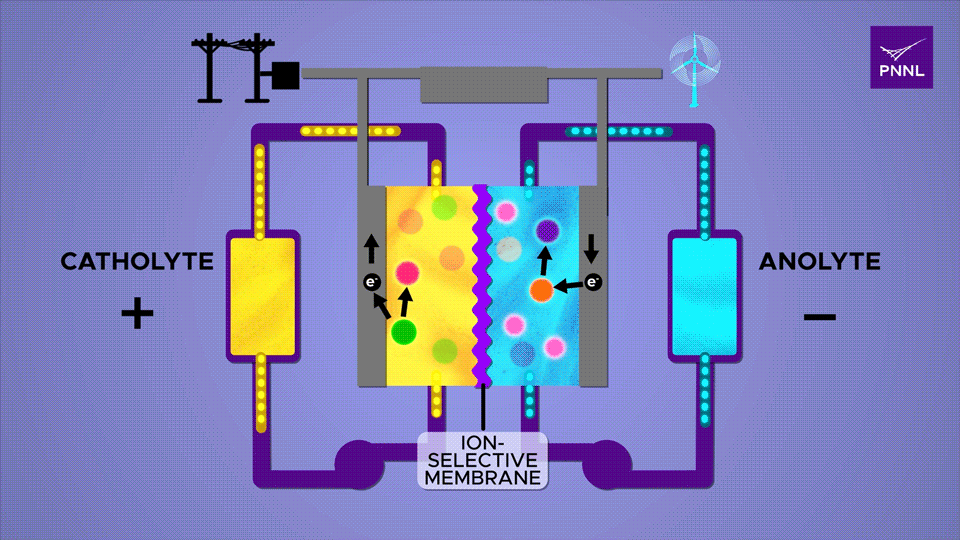
New research led by scientists at the US’ Pacific Northwest National Laboratory found that a common food and medicine additive can boost the capacity and longevity of a next-generation flow battery design in a record-setting experiment.
In a paper published in the journal Joule, the researchers detail the first use of a dissolved simple sugar called β-cyclodextrin, a derivative of starch, to boost battery longevity and capacity.
In a series of experiments, they optimized the ratio of chemicals in the system until it achieved 60% more peak power. Then they cycled the battery over and over for more than a year, only stopping the experiment when the plastic tubing failed. During all that time, the flow battery barely lost any of its activity to recharge. This is the first laboratory-scale flow battery experiment to report more than a year of continuous use with minimal loss of capacity.
The β-cyclodextrin additive is also the first to speed the electrochemical reaction that stores and then releases the flow battery energy, in a process called homogeneous catalysis. This means the sugar does its work while dissolved in solution, rather than as a solid applied to a surface.
“This is a brand new approach to developing flow battery electrolyte,” Wei Wang, principal investigator of the study, said in a media statement. “We showed that you can use a totally different type of catalyst designed to accelerate the energy conversion. And further, because it is dissolved in the liquid electrolyte it eliminates the possibility of a solid dislodging and fouling the system.”

While there are many flow battery designs and some commercial installations, existing commercial facilities rely on minerals such as vanadium that are costly and difficult to obtain. That’s why research teams are seeking effective alternative technologies that use more common materials that are easily synthesized, stable and non-toxic.
“We cannot always dig the earth for new materials,” said Imre Gyuk, director of energy storage research at the Department of Energy’s Office of Electricity. “We need to develop a sustainable approach with chemicals that we can synthesize in large amounts—just like the pharmaceutical and the food industries.”
According to Ruozhu Feng, first author of the new study, part of the team’s goal was to find a simple way to dissolve more fluorenol in a water-based electrolyte.
“The β-cyclodextrin helped do that, modestly, but its real benefit was this surprising catalytic ability,” Feng said.
The sugar additive accepts positively charged protons, which help balance out the movement of negative electrons as the battery discharges. It’s like the sugar sweetens the pot to allow the other chemicals to complete their chemical reactions.
The study is the next generation of a PNNL-patented flow battery design first described in the journal Science in 2021. Back then, the researchers showed that another common chemical, called fluorenone, is an effective flow battery component. But that initial breakthrough needed improvement because the process was slow compared with commercialized flow battery technology. This new advance makes the battery design a candidate for scale-up, the researchers say.
At the same time, the research team is working to further improve the system by experimenting with other compounds that are similar to β-cyclodextrin but smaller. Like honey, β-cyclodextrin addition also makes the liquid thicker, which is less than ideal for a flowing system. Nonetheless, the researchers found its benefits outweighed its drawbacks.